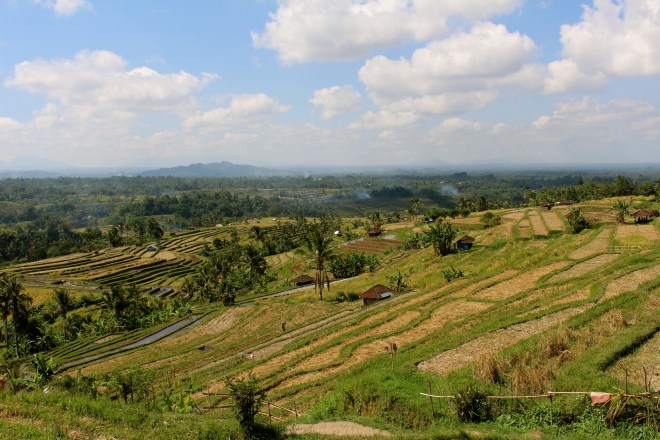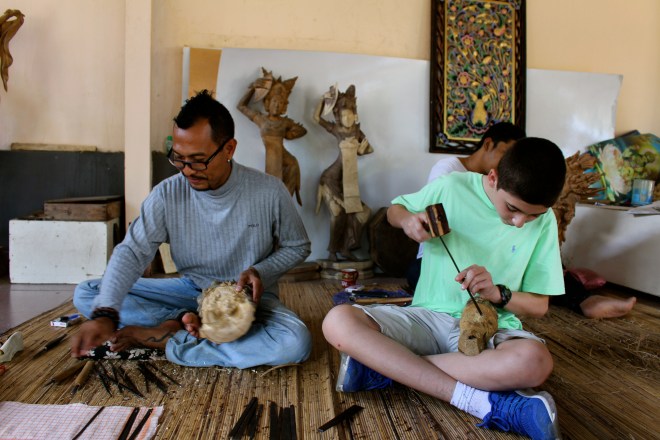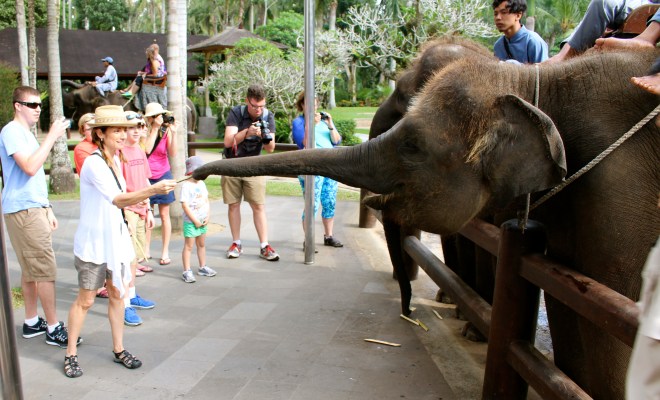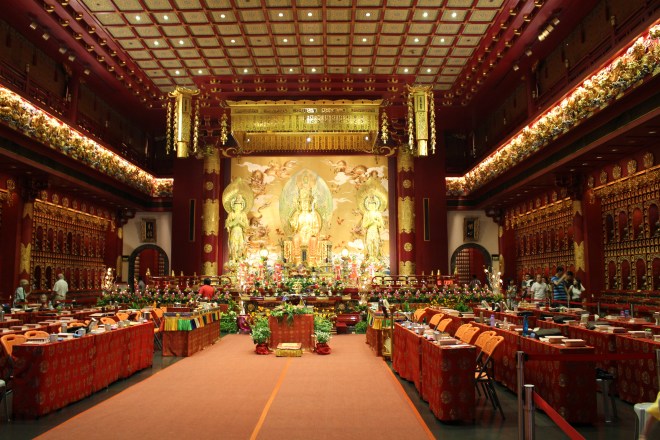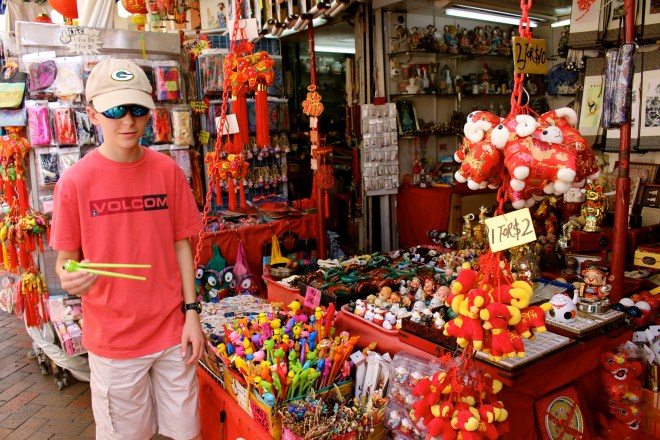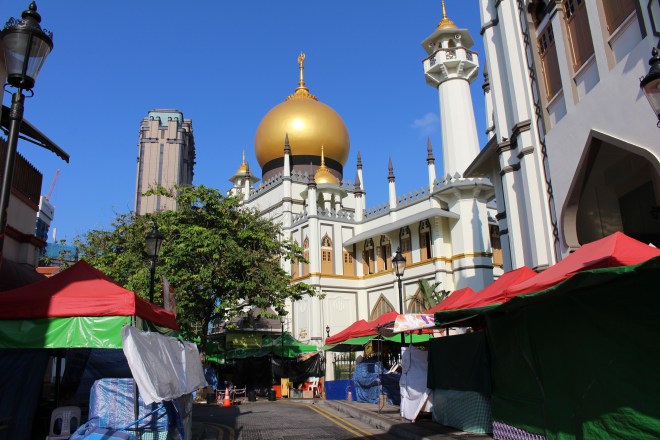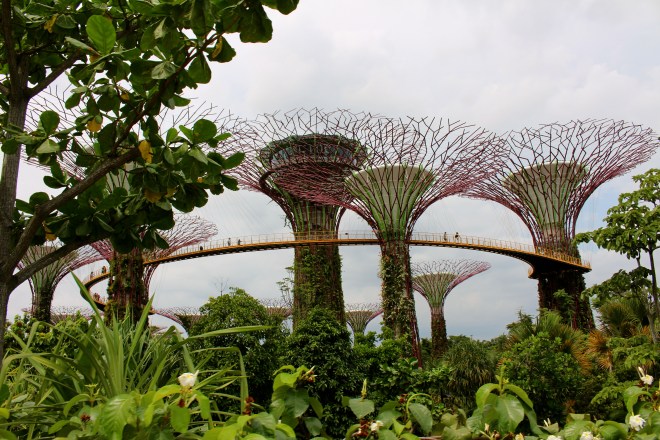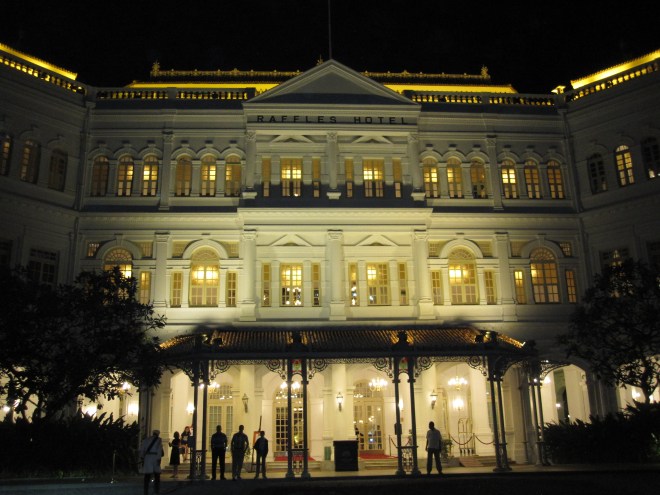Kowloon Peninsula, the northern portion of Hong Kong connected to mainland China, has become an ever expanding mecca for shopping, the arts, and entertainment. A British Colony since 1860, Hong Kong was returned to China in 1997. A cosmopolitan center, Kowloon is tightly packed and endlessly bustling with a close proximity to the international airport and the cruise ship terminal.
Although its mostly populated by Cantonese speaking Chinese, other cultures are represented in the mix: Thai, Indian, Indonesian, Filipino, and Nepalese, making for a thoroughly international city. Often labeled “more Chinese” than its island companion located just across Victoria Harbor, a visit to Hong Kong should include time spent in both areas. (Check out my recent article,”Best of Hong Kong Island,” for plenty of tips to complete your trip).
TOP KOWLOON SIGHTS
Tsim Sha Tsui: This vibrant district in the southern tip of Kowloon is a major tourist hub chock full of restaurants, museums, and performance spaces. It’s Hong Kong’s most cosmopolitan corner and host to the highest concentration of hotels. Take a walk down the Waterfront Promenade to the Avenue of the Stars (like Hollywood’s walk of fame), where local film stars are memorialized in the pathway. (The statue of Bruce Lee gets the most attention from selfie-stick wielding tourists.) Climb the stairs near the Clock Tower to the elevated observation deck to get face to face with Hong Kong’s iconic view.

Colorful Wong Tai Sin Temple
Wong Tai Sin Temple: Built in traditional Chinese style, this famous Taoist temple boasts grand red pillars, a soaring golden roof adorned with blue friezes, bright yellow latticework, and detailed multi-colored carvings. Stop and have your fortune told by soothsayers working just outside the temple entrance.
Chi Lin Nunnery & Nan Lian Garden: This Tang Dynasty-style Buddhist complex is the largest in East Asia. Nuns have lived onsite since 1937, but the present structure opened in 1998—built completely of wood without using any metal nails. The grand compound includes Buddhist halls and a tranquil lotus pond-filled garden at the main entryway. The most impressive statue, the massive, golden Sakyamuni Buddha, rests on a lotus altar in the Main Hall. Across the road, Nan Lian Garden is hands down the most beautiful and tranquil Chinese garden in Hong Kong. Its winding paths take you past classically styled ornamental rocks, pavilions, water features, and rare, sculptured trees.
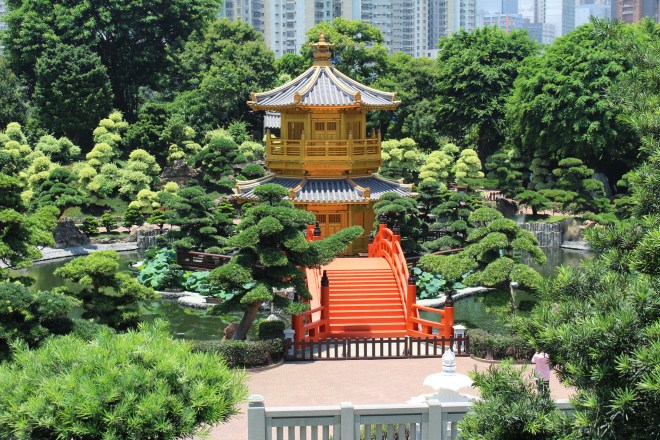
Hong Kong gem — Nan Lian Garden
MUSEUMS:
Traveling with kids? There are plenty of museums to keep them busy. The Science Museum: this technology and science focused museum with a flight simulator and loads of interactive exhibits, will keep kids of all ages engaged. The iconic, egg-shaped Space Museum houses the planetarium, Hall of Astronomy, Omnimax and 3D theatres. Recently undergoing major construction, check the website for its grand reopening. The Museum of History documents the story of Hong Kong, from its ancient origins to the end of colonial rule. The Museum of Art, Hong Kong’s largest public art gallery, mixes traditional and contemporary paintings, calligraphy, and photography – temporarily closed for a major renovation, it is slated to open in 2018. Hong Kong Cultural Center: Adjacent to the Star Ferry, this multipurpose performance center has a revolving schedule of Philharmonic performances, ballet, musicals, and children’s programming – holiday times brings the celebrated “Nutcracker.”
SHOPPING
Shanghai Tang: This unique men’s and women’s outfitter specializes in collections representing a modern chinoiserie style blending rich fabrics and traditional Shanghainese tailoring in novel, up-to-the-minute designs. Bright, saturated colors are a hallmark.

Shanghai Tang
Harbour City: A walk through this cruise ship terminal will lead you to three shopping malls which comprise this massive complex stretching for 500 meters along Canton Road. Yes, many of the 450 retail locations are those you see in the U.S. or European malls, but there are some unique shops, some great dining choices (50 of them!), and on a hot and humid Hong Kong day, nothing beats browsing in this blocks-long, air-conditioned oasis.
Temple Street Night Market: A popular street bazaar named for the Tin Hau temple located center stage stimulates the senses with fortune tellers, opera performers, and street food hawkers interspersed with endless displays of trinkets, tea ware, electronics, watches, menswear, and antiques.
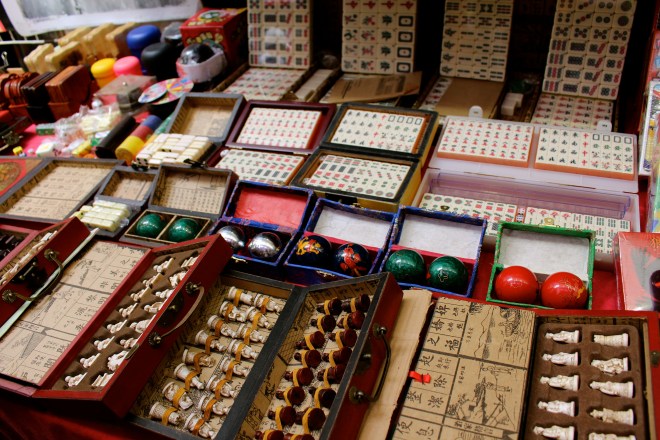
Trinkets, chess pieces, and mah jongg sets on display in Kowloon’s outdoor markets
Ladies Market: Located at Tung Choi Street, this is the place to find inexpensive women’s clothes, from lingerie to shoes. It’s especially good for jeans and accessories, men’s and kids’ clothing, as well as toys and knick-knacks.

Flower Market
Jade Market: Visit the Jade Market in Yau Ma Tei at the junction of Kansu and Battery Streets to browse 450 stalls selling jade of all types, shapes, sizes and prices. Believed to bestow magical properties, wearing jade provides a triple benefit: good health, good luck, and protection from evil spirits.
Bird Garden: Nestled into Yuen Po Street, this charming Chinese-style garden and tribute to the age-old avian hobby includes some 70 songbird stalls. Beautifully crafted bamboo cages and bottomless bins of live crickets are also for sale. Nearby, the Flower Market peddles everything from Dutch tulips to exotic orchids, and on Tung Choi Street, stop at the Goldfish Market to gaze at aquariums, corals, and exotic fish.
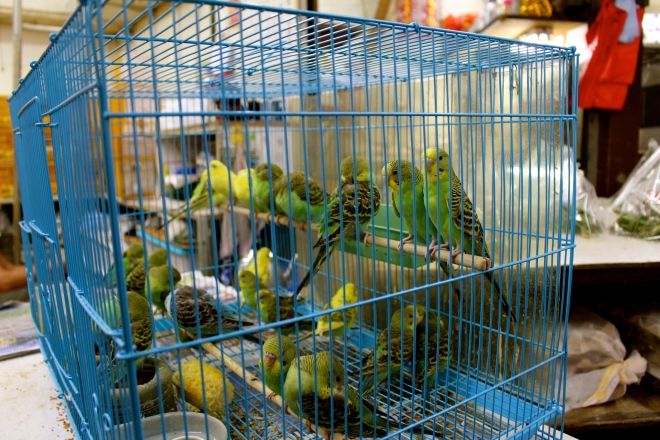
Song bird enthusiasts will be enthralled with Kowloon’s Bird Garden
RESTAURANTS:
Overseas visitors soon realize that the Chinese food they encounter in their countries bears little resemblance to what is served in Hong Kong. Cantonese dim sum (dumplings steamed in bamboo baskets) are delicious light as air morsels meant to be shared—authentic local places are plentiful. Many menus, although only in Chinese, come equipped with user friendly photos, so pointing can be a very effective way of ordering. Beyond Cantonese choices, there’s a substantial cosmopolitan culinary scene: Southeast Asian cultures are well represented — Malaysian, Thai, and Singaporean.

Dim Sum translates to “little heart”
Cuisine Cuisine: There are two outposts of this well regarded restaurant, one in Kowloon (with sweeping views of the Harbor) and one on Hong Kong Island. Mastering the “36 Chinese Cooking Methods,” they offer a genuine Cantonese dining experience with dishes prepared with seasonal ingredients and traditional, time-honored recipes.
Serenade: With a panoramic, harbor view, this bustling Cantonese restaurant is conveniently located right above the Cultural Center and offers an array of stir-fry and dim sum served from traditional trolleys.
Hutong: Dine in the evening at this northern Chinese restaurant to make the most of the dramatic views and the nightly multimedia light show over the harbor. Settle into the funky, vintage Hong Kong vibe and enjoy a signature Chinese menu with a contemporary twist.

Digging in to Afternoon Tea at the Peninsula
Afternoon Tea at Peninsula Hotel: Make a stop a this iconic, colonial era hotel’s, high ceilinged lobby for an elegant afternoon of tea and finger sandwiches, savory pastries, and raisin scones served with clotted cream and strawberry preserves. Hint: although the often lengthy queue for afternoon tea starts at 2pm, (first come, first served), if you sit at a table earlier (around 1:30pm) and order an appetizer from the lunch menu, you can promptly switch to the tea menu when it commences.
DAY TRIPS:
Lantau Island: Take a ferry to Hong Kong’s largest island – home to Disneyland and the city’s international airport. Its south coast is ringed by beaches, and its mountainous center region boasts the red, orange and gold Po Lin Monastery, and the bronze Tian Tan Buddha, known affectionately as the “Big Buddha.” A long flight of steps takes you up to the statue’s base and rewards you with expansive views of the city.
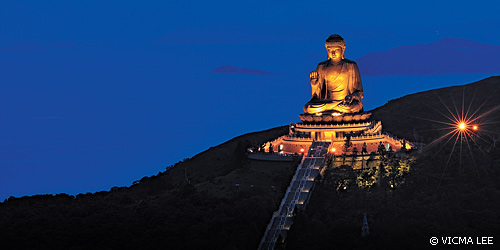
Lantau Island’s Tian Tan Buddha
Macau: Originally a Portuguese colony, it was returned to China in 1999 becoming, like Hong Kong, a Special Administrative Region (SAR). Once a sleepy outpost, it is now known as the “Vegas of the East.” There’s lots of pizzazz provided by international mega-casinos, but pockets of graceful southern European charm can still be found. Accessible by ferryboat or four-hour car ride, an ongoing massive construction project consisting of 26 miles of bridges and tunnels will eventually link Hong Kong to Macau (trimming the ride to 45 minutes).
 Ready to plan a unique trip for you or your family? Contact me at mollie@herrickstravel.com. For more information on my trip planning services, please click here.
Ready to plan a unique trip for you or your family? Contact me at mollie@herrickstravel.com. For more information on my trip planning services, please click here.
SUBSCRIBERS: to view this complete article online and read my previous articles, use this link: uniquefamilytraveler.com.
To become a SUBSCRIBER, look for the “subscribe to this blog by email” box, and then respond to the follow-up email.


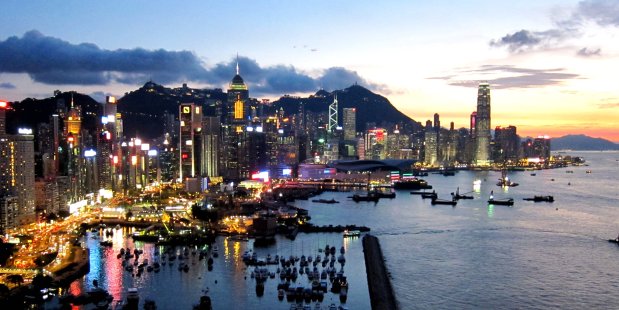
 Hong Kong Island’s Central District is know for its tightly packed financial hub. It’s heavy on international banks, but light on historical buildings. For gallery hopping or antique browsing, visit Lan Kwai Fong and Soho. Sheung Wan is more traditional but still hip, while Wan Chai beckons visitors to its nightlife and shopping mecca, Causeway Bay. By contrast, the island’s more serene, and less inhabited southern coast, is ringed with harbors and sandy beaches.
Hong Kong Island’s Central District is know for its tightly packed financial hub. It’s heavy on international banks, but light on historical buildings. For gallery hopping or antique browsing, visit Lan Kwai Fong and Soho. Sheung Wan is more traditional but still hip, while Wan Chai beckons visitors to its nightlife and shopping mecca, Causeway Bay. By contrast, the island’s more serene, and less inhabited southern coast, is ringed with harbors and sandy beaches.

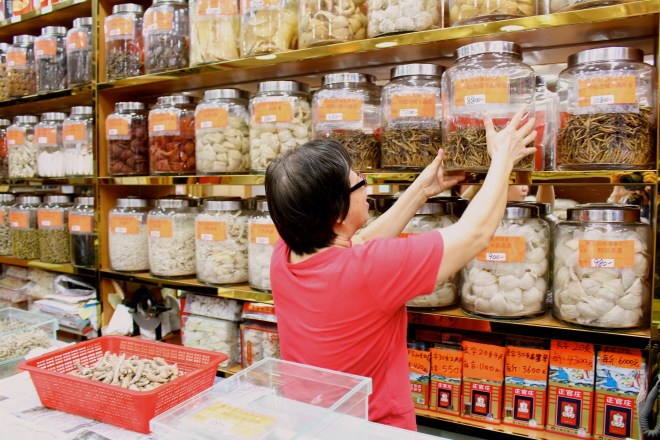
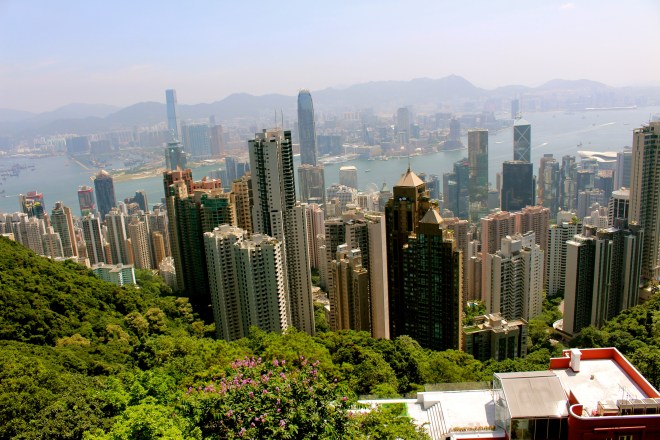

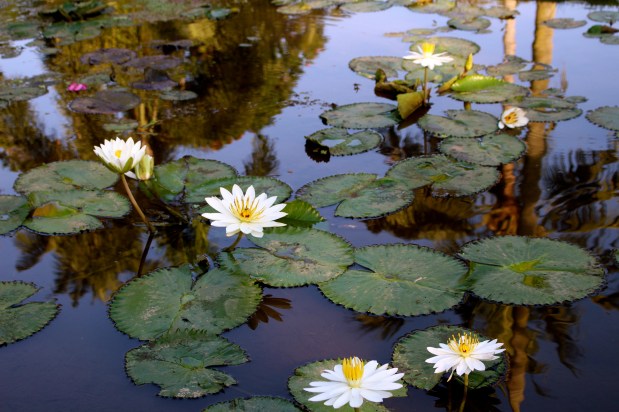

 Bali is part of the Republic of Indonesia (a sprawling archipelago of over 17,000 islands), with the Bali Sea to the north and Indian Ocean to the south. Just eight degrees south of the equator, its climate is tropical with a dry season from April to October. Although it’s a small island (about the size of Delaware or Costa Rica), it’s densely populated and very diverse: lush jungles, rice terraces, and towering volcanoes dot the interior; coral reefs and sprawling sand beaches (in Nusa Dua, Jimbarin and Semniyak) dot its coasts.
Bali is part of the Republic of Indonesia (a sprawling archipelago of over 17,000 islands), with the Bali Sea to the north and Indian Ocean to the south. Just eight degrees south of the equator, its climate is tropical with a dry season from April to October. Although it’s a small island (about the size of Delaware or Costa Rica), it’s densely populated and very diverse: lush jungles, rice terraces, and towering volcanoes dot the interior; coral reefs and sprawling sand beaches (in Nusa Dua, Jimbarin and Semniyak) dot its coasts.